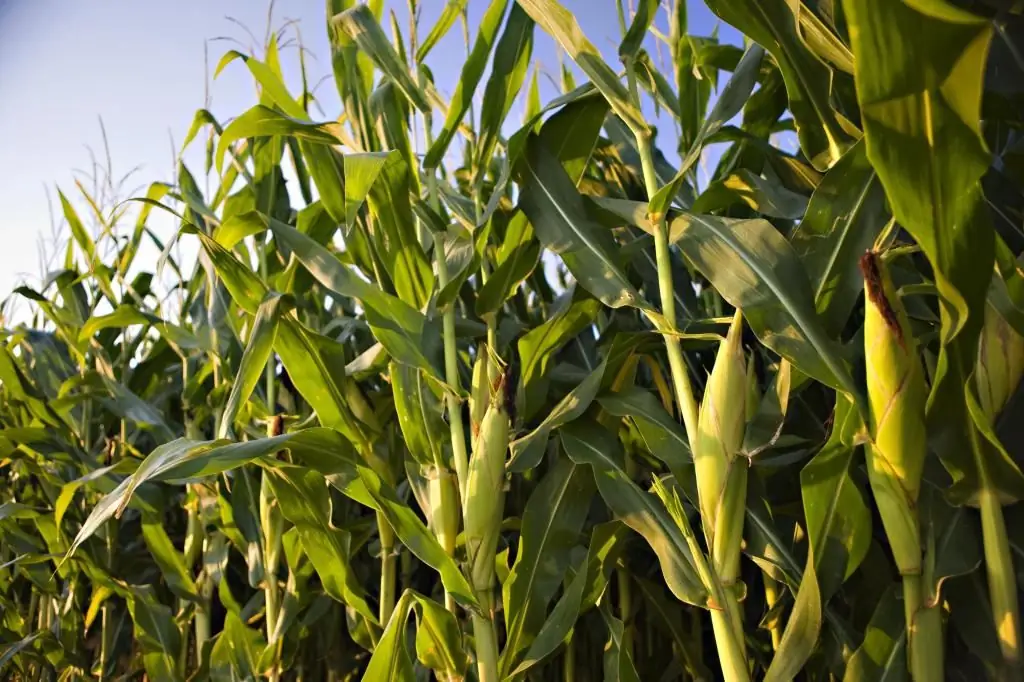2025 Author: Howard Calhoun | [email protected]. Last modified: 2025-06-01 07:12:56
Today, many villagers breed ducks of various breeds, usually for tender and tasty meat, as well as eggs, down and feathers. When choosing a breed for breeding, the vitality and resistance of the bird to diseases, how quickly it gains weight and, of course, how good its meat is in taste, as well as what are the disadvantages and advantages are important. Every year the market offers consumers all new breeds improved in one way or another.

Relatively recently, in the late 90s of the last century, a blue favorite duck appeared. Description and main characteristics of this breed are presented below.
When and where did it appear?
This breed of ducks was bred in Bashkiria, at the breeding poultry farm Blagovarsky in 1998. The white Peking duck was taken as a basis, which was crossed and selected for a long time. Initially, it was used for industrial breeding, but due to the excellent “operational” characteristics, the blue favorite duck breed is increasingly found both in farms and in ordinary rural farmsteads. Adults are large birds with a beautiful, bluish-smoky feather color that can vary from light to quite dark tones. This is not a marriage, and such a separation is due to the genetic characteristics of the breed.
Blue favorite - duck: description, photo
Thanks to their beautiful grayish-blue plumage, these ducks got their name.

In addition, the adult bird of this breed is distinguished by a dense, “strongly knocked down” physique. She has an elongated raised body with a wide and not very convex chest. A large head with a rather long and flat beak is located on a neck of medium length. As mentioned above, the blue favorite duck breed can have plumage of different colors, which determines the color of the bird's massive paws and beak.
Features
Recall that the whole variety of breeds of domestic ducks is divided into three main areas in terms of productivity: meat, general use (meat-egg) and egg. The blue favorite duck belongs to meat-type birds. The description given by the breeders suggests that the birds of this breed are early and gain weight well. With special fattening, a drake can gain up to 3 kg by two months. It is during this period that the bird consumes the largest amount of food. Subsequently, the amount of foodeaten by one individual decreases, and growth becomes more uniform. The meat of such ducks is lean, which distinguishes it from such common breeds as Peking and Bashkir. The duck is a blue favorite, reviews of the owners confirm this, it perfectly tolerates both heat and winter cold.
Productivity
Most poultry farmers consider good weight gain and how quickly and easily they fatten as the main advantage of the blue favorite breed. So, by the time of puberty, at 24-26 weeks, a drake can weigh about five, and a duck - up to 4 kg.
Egg production
At the age of five or six months, the blue favorite duck begins to lay. Egg Description:
- average weight - about 90g;
- pleasant, delicate and mild taste;
- from 100 to 150 pieces per season, and 220-250 pieces per year.
Features of maintenance and care
An important characteristic of the blue favorite duck for poultry farmers is its endurance and unpretentiousness.

Unlike many other breeds, an ordinary paddock is suitable for breeding such a bird, and you do not need to spend time and effort on building and special equipment for ducklings. The immunity of these ducks is strong, which allows them to adapt quite easily to various climatic conditions. Meat quality and egg production are not affected by high or low temperatures, except at extremes.
Preparing a place for young animals
Before you buy young animals, you need to prepareroom, working tools and a place for walking. Before launching the chicks into the room where they will live, it is necessary to carry out a wet cleaning, as well as disinfect the walls, equipment and inventory with a hot solution of 3% soda ash. The place intended for walking ducklings must be leveled and sprinkled with a 5 cm layer of sand.
Raising ducklings
After you have purchased and brought home, be sure to drink from a pipette a very weak solution of potassium permanganate (potassium permanganate) chicks of the blue favorite (duck) breed. Description, photos of ducklings you see below.

Then the ducklings are placed in a warm room, with a temperature of +200С to +300С, near a heat source. For the normal growth and development of the bird, lighting is necessary for 16 hours daily, for which special lighting or conventional lamps are used. Straw or hay can be used as bedding for young animals. How well the heating of ducklings is organized can be judged by their behavior: if they are active and cheerful, move a lot or sit, not shrunk into a ball, the temperature is quite normal. If it's too hot, then any young favorite blue duck that you raise will show you its heavy breathing, which is very different from the usual. If the chicks are cold, then they will scream quite loudly, “hang out” in one place and crush each other.
What and how to feed?
Does not differ in particular pretentiousness or capriciousness in terms of food blue duckfavorite.

Feeding these birds will not be difficult even for a beginner poultry breeder. At first, ducklings are given crushed duck or chicken eggs, and after a week, finely chopped grass, dandelion leaves or nettles are added to the feed. During the first month, you can give the chicks low-fat cottage cheese and milk. As the birds grow older, such juicy foods as carrots, clover, potatoes, enriched with ground chalk or shells, are introduced into the diet. At the age of one month, young animals can be transferred to grain mixtures. If ducks have the ability to pluck grass, as well as access to a reservoir, then they will get part of their food on their own. It is necessary to feed the bird of the blue favorite breed 2-3 times a day. At the first reception, it is better to give various mixed wet foods, and in the evening - germinated grain. Additives such as crushed limestone, shells, chalk, eggshells should be constantly available to ducks. In addition, fine gravel contributes to the normal digestion of these birds.
Water mode
For little ducklings, water with a temperature of about +200С is needed. When installing drinkers, you should place them away from the feeders, as the chick, chewing food, will try to drink it right away.

If he succeeds, then part of the food will simply be washed off with water without getting into the bird's stomach. Adults need fresh and clean water to clear nostrils clogged with food and rinse their beaks. It is best to place the liquid in severalnot very wide, but deep containers. The depth of the drinker should be such that a blue favorite duck can place its head in it. The description of this bird does not make it possible to predict the desired size, so when making it, you will have to focus on the dimensions of your pets.
Pros and cons
Most of the owners who breed the blue favorite note the following positive features of it:
- High viability and survival of young animals.
- Calm and even demeanor.
- Good he alth and excellent immunity.
- Unpretentiousness, ease of maintenance and care.
- High adaptability to any conditions.
- Good egg production.
- High fattening speed.
- Profitability of breeding, as the bird of this breed is large and precocious.
- Lenten tender meat with excellent taste.
The blue favorite duck, reviews of which are quite numerous, has, according to poultry farmers and farmers, only one, but a significant drawback: it almost completely lacks the instinct to incubate eggs.

Because of this, in order to get ducklings, you have to use incubators or lay eggs to poultry and ducks of other breeds. In rare cases, this instinct “wakes up” in ducks of the blue favorite, and then the bird practically does not leave the nest throughout the entire incubation time, which is 27-28 days. She leaves very rarely and for very short periods of time, only to drink and drink.eat. At one time, a duck that feels like a mother hen can hatch up to 15 ducklings, and raise all 30. It is necessary to plant other people's chicks with any poultry on the same day when the "relatives" hatch. If you try to make a “sharing” at another time, then the hen will not accept them and will simply throw them out of the nest. A feature of this breed is that the mother hen not only plucks her fluff to warm her nest, but also actively loses feathers. You should not be afraid of this, as this is a natural and quite normal blue favorite process for ducks.
Recommended:
Muscovy duck (Indo-duck): breeding, cultivation, maintenance. Muscovy duck incubation mode

Muscovy duck (in the people of the Indo-duck, lat. Cairina moschata) is an independent species of tree ducks, the population of which is especially common in South America and Mexico. For turkeys, contrary to popular belief, it does not apply. Domesticated by the ancient Aztecs, today it is common in almost all countries, in particular in Russia. It has great recognition among amateur poultry farmers
Duck fire (red duck) what does it look like? Ogar duck: photo

Duck Ogar is a waterfowl, belongs to the duck family. In many cultures of different peoples, including Slavic ones, the ogar was considered a sacred bird
Spring wheat: cultivation technology, features of sowing, cultivation and care

About 35% of all grain plantings on the planet today falls on wheat. In purchases, the share of such grain is 53%. Technologies for growing spring wheat in Russia can be used differently. But when cultivating this crop, crop rotation must be observed and careful preliminary preparation of the soil must be carried out
Corn: cultivation technology, features of planting, cultivation and care

Every one of our compatriots has seen and tasted corn. However, not everyone thinks about how important culture it is. Therefore, tell about it in more detail. We will also dwell briefly on the technology of corn cultivation - it will be very useful for novice farmers to learn about this
Geese and ducks: breeds, features, description, cultivation and care

There are many breeds of ducks and geese. Growing such a bird in the courtyard is usually not too difficult. All existing varieties of ducks and geese are unpretentious and at the same time quite high productivity

